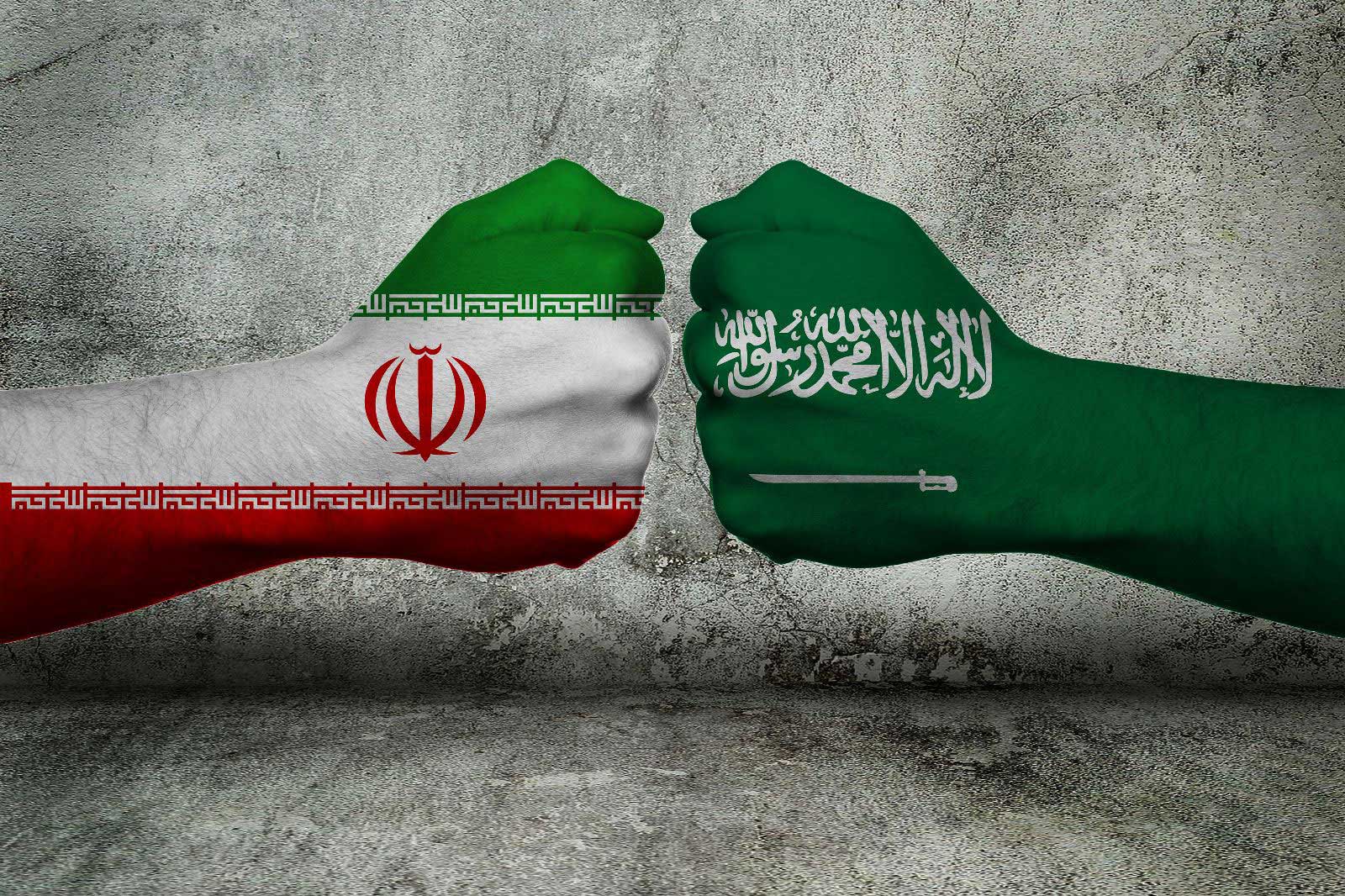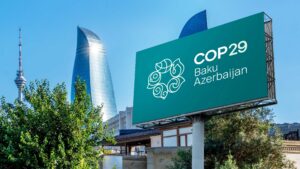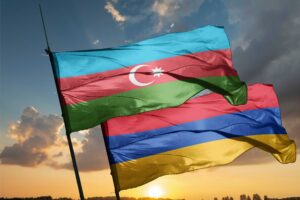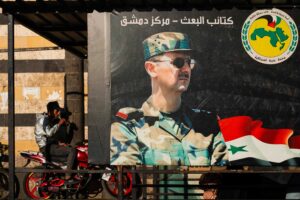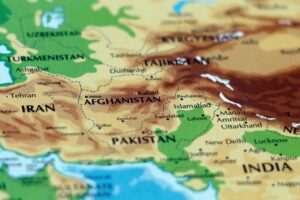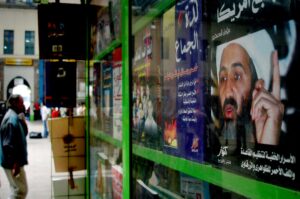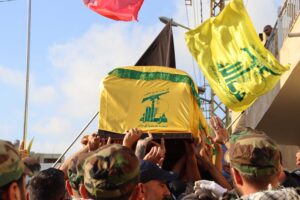For about a year and a half, there was hope that Iran and Saudi Arabia, two Persian Gulf neighbours and regional rivals, would overcome the period of hostility between them and agree on some form of normalisation in bilateral relations. That hope was primarily fuelled by the Iranian-Saudi dialogue process, which began in April 2021 in Baghdad with the participation of the two countries’ senior security officials. The talks were ongoing, except for a seven-month hiatus between September 2021 and April 2022. There were even reports that the parties might soon agree on resuming diplomatic relations or at least upgrading the level of talks from security to political, i.e., by foreign ministers.[i]
Public protests in Iran against the Islamic Republic have been the independent variable in recent developments in Iran-Saudi relations.
Over the past three months, however, a set of developments has not only dashed the hopes of reviving relations, but escalated tensions between the two countries to a dangerous level. It seems that the unprecedented public protests in Iran against the Islamic Republic have been the independent variable in recent developments in Iran-Saudi relations.
Like Iran’s other Arab neighbours in the Persian Gulf, Saudi Arabia has so far refused to take an official stance either for or against the protests. In fact, it took more than a month for Saudi officials to even mention the issue. On 19 October, Saudi Foreign Minister Faisal bin Farhan Al Saud said in an interview that “Saudi Arabia has a fixed policy of non-interference in the internal affairs of states,” adding, “We wish Iran and its people the best.”[ii] Saudi Arabia’s cautious stance, shared by other Gulf Cooperation Council (GCC) members, is based on at least two primary considerations. On the one hand, such states, also authoritarian in nature, generally do not have a favourable view of bottom-up political processes and attempts at popular regime change. Considering the abundance and variety of political and social bonds between the Middle East countries, any genuine democratic transformation in Iran may have serious repercussions for its Arab neighbours.
On the other hand, GCC states might believe that the Islamic Republic is still capable of containing the situation and that regime change is not on the horizon, at least in the short term. Therefore, openly supporting the protest movement would risk a direct reaction from Tehran. In any case, a protracted conflict between the Iranian state and society that would gradually erode both sides’ capacity and undermine Iran’s potential as a regional rival would best serve Riyadh’s interests.
Despite the Saudi government’s cautious position, since the beginning of the protests, Iranian authorities have accused Riyadh of instigating unrest in Iran and threatened retaliation. For example, Iran’s Intelligence Minister Esmail Khatib accused Saudi Arabia of providing financial support to anti-government protests, warning that Iran’s “strategic patience” may soon be over, and Tehran may decide to “punish” Riyadh.[1] Similarly, without naming Saudi Arabia, Yahya Rahim Safavi, a senior military adviser to Iran’s Supreme Leader Ayatollah Seyyed Ali Khamenei, said that the Gulf countries “must choose between their media and their security.”[iii]
(Mis)perception has...increased the potential of a serious confrontation between Tehran and Riyadh.
Safavi’s reference to “media” is of particular importance here. It seems that a major concern for the Iranian authorities is the influence that Saudi Arabia has managed to gain among the Iranian people through its Persian-language media.[iv] Such influence is undoubtedly facilitated by the Islamic Republic’s failure over the last four decades to effectively use media for public persuasion. Nevertheless, the Saudi-supported media’s extensive financial resources have enabled it to attract audiences more successfully than other Persian-language outlets outside of Iran. This success has irritated the authorities in Tehran to the extent that the Intelligence Ministry has called the Persian-language TV channel Iran International a “terrorist organization,” warning that any connection with the channel would amount to acting against Iran’s national security.[v] Some reports in November claimed that Iran was even preparing to conduct a military attack against Saudi Arabia.[vi]
Saudi authorities consider Iranian threats an attempt to divert international attention from the protests inside the country.[vii] Indeed, this argument can explain a part of Iran’s approach. However, as far as the protests and Riyadh’s alleged role are concerned, the issue is considered more complicated in Tehran. Iranian authorities are increasingly using the keyword “hybrid warfare” to describe the protests.[viii] What they mean by this concept is that street protests are only one part of a “plot” orchestrated and implemented by foreign actors against the Islamic Republic. Other tools, they claim, include diplomatic pressure, economic sanctions, inciting separatist sentiments and an extensive media campaign. This notion can explain the disproportionate Iranian response (threat of a military attack) to the perceived threat (the Saudi-owned media). In other words, the Islamic Republic already sees itself as engaged in a war in which the Saudis are also a party. Therefore, in the eyes of the Iranian leadership, a military response—direct or indirect—would in fact be proportionate. This (mis)perception has already increased the potential of a serious confrontation between Tehran and Riyadh.
Iran’s direct threats against Saudi Arabia are not the only cause of concern for Saudi authorities. They apparently also worry that the Islamic Republic’s growing sense of insecurity due to domestic and international pressures may lead it to take a bold step, such as building a nuclear weapon. These concerns are, indeed, quite credible; Iran has significantly reduced its cooperation with the International Atomic Energy Agency (IAEA), and negotiations to revive the Joint Comprehensive Plan of Action (JCPOA) have practically reached a standstill. In this vein, the Saudi Foreign Minister warned on 11 December, “if Iran gets an operational nuclear weapon, all bets are off.”[ix] Despite stressing that Riyadh is still “sceptical” about the JCPOA, bin Farhan said his country supports reviving the deal and turning it into the basis for a stronger agreement with Tehran.
There is no prospect for substantial improvement in bilateral relations.
Saudi Arabia’s concern over the future of Iran’s nuclear programme has increased to such an extent that it was reflected in the joint statement issued during Chinese President Xi Jinping’s recent visit to Riyadh. The statement, published on 9 December, calls on Iran to cooperate with the IAEA, abide by the international non-proliferation regime, and respect the principle of good neighbourliness and non-interference in other countries’ internal affairs.[x] In Iran, the statement was met with strong criticism and was seen as a change in Beijing’s approach toward Tehran.[xi] However, it is Tehran’s increasing threats, on the one hand, and its possible decision to double down on nuclear escalation, on the other, that are among the main factors leading Saudi Arabia to rethink its regional and international partnerships.
From a broader perspective, Saudi Arabia, like many other states, is adapting its foreign policy orientation to new international realities: the changing role of the United States in the Middle East, the rise of China, and the confrontation between Russia and the West. Reaching out to countries like China and Russia, which are, often incorrectly, considered Iran’s “partners,” can offer a means to deal more effectively with actual and potential threats coming from Tehran. Meanwhile, at the regional level, a growing Iranian threat may increase Saudi motivation to normalise relations with Israel. In turn, Iran may resort to its traditional method—employing allied non-state militias—to counter Saudi Arabia. The collapse of the ceasefire agreement between Saudi Arabia and the Iran-backed Houthis in Yemen has already paved the way for an escalation on that front.[xii]
In any case, even if Tehran and Riyadh decide to resume their dialogue in the near future, there is no prospect for substantial improvement in bilateral relations at the moment. Nevertheless, although limited or indirect clashes between the two sides are entirely possible, the option of a full-scale confrontation does not appear to be on the table for either side.
[i] Syed Zafar Mehdi, “Iran says talks with Saudi Arabia to advance from security to political level”, Anadolu Agency, 22 July 2022. https://www.aa.com.tr/en/middle-east/iran-says-talks-with-saudi-arabia-to-advance-from-security-to-political-level/2643198.
[ii] “The position of the Saudi Foreign Minister regarding the recent protests in Iran”, ISNA News Agency, 19 October 2022. isna.ir/xdMCbk
[iii] “Iran warns Saudi Arabia ‘our strategic patience’ may run out – Fars”, Reuters, 9 November 2022. https://www.reuters.com/world/middle-east/iran-tells-saudis-its-strategy-patience-not-guaranteed-continue-fars-2022-11-09/.
[iv] Giorgio Cafiero, “Tensions between Iran and Saudi Arabia are resurfacing”, Responsible Statecraft, 21 November 2022. https://responsiblestatecraft.org/2022/11/21/tensions-between-iran-and-saudi-arabia-are-resurfacing/.
[v] “The Minister of Information of the Islamic Republic declared the ‘Iran International’ Network a ‘Terrorist’ Organization”, Radio Farda, 17 November 2022. https://www.radiofarda.com/a/iran-announce-iran-international-terrorist-organization/32121291.html.
[vi] “Riyadh’s reaction to Salami’s threats: He wants others not to be distracted by ‘objections’”, Voice of America, 10 November 2022. https://ir.voanews.com/a/iran-saudi-protests-salami/6815293.html.
[vii] “Saudi security officials: The Islamic Republic wants to start a war to divert attention from internal protests”, KayhanLondon, 11 November 2022. https://kayhan.london/fa/1401/08/11/304157/.
[viii] “Intelligence Minister Provides Analysis of Hybrid War on Iran”, Tasnim News Agency, 10 November 2022. https://www.tasnimnews.com/en/news/2022/11/10/2802105/intelligence-minister-provides-analysis-of-hybrid-war-on-iran.
[ix] “Saudi foreign minister: ‘All bets off’ if Iran gets nuclear weapons”, Reuters, 11 December 2022. https://www.reuters.com/world/middle-east/saudi-foreign-minister-all-bets-off-if-iran-gets-nuclear-weapon-2022-12-11/.
[x] “Joint Statement at the Conclusion of the Saudi-Chinese Summit”, Saudi Press Agency, 09 December 2022. https://www.spa.gov.sa/2407997.
[xi] Iran International Newsroom, “Iranians Slam China’s Endorsement of UAE Territorial Claim”, Iran International, 11 December 2022. https://www.iranintl.com/en/202212111555.
[xii] Jess Diez, “Truce in Yemen Not Extended”, Middle East Policy Council, 4 October 2022. https://mepc.org/commentary/truce-yemen-not-extended.


